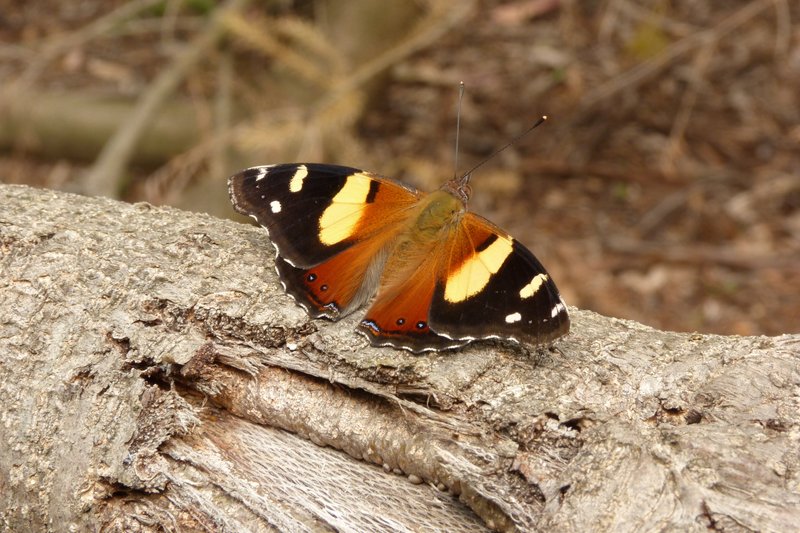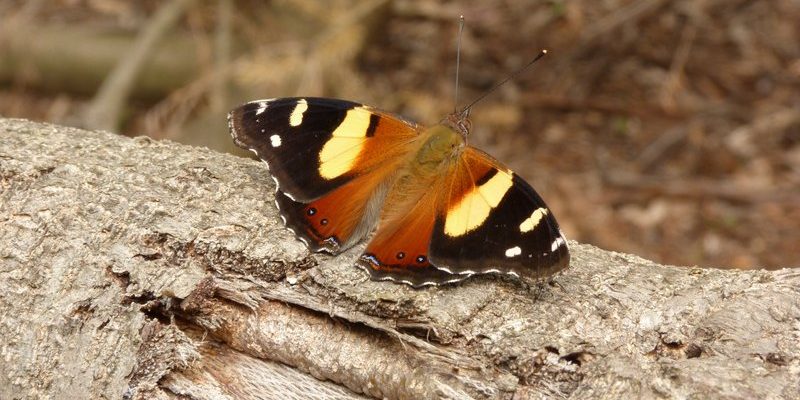
The Admiral Butterfly is one of the most striking and easily recognizable butterflies in the world, boasting vibrant colors and a captivating presence. Imagine stepping into a garden filled with colorful blooms, and suddenly, a butterfly flutters past, adorned in deep reds, blacks, and whites. That’s the Admiral Butterfly for you! With its graceful flight and beautiful patterns, this butterfly isn’t just a pretty face; it also has fascinating behaviors and stories worth exploring.
If you’re curious about the Admiral Butterfly and what makes it special, you’re in the right place. In this article, we’ll dive into its unique characteristics, habitat, life cycle, and much more. So, grab your favorite cup of coffee and let’s embark on this colorful journey through the world of butterflies!
What is the Admiral Butterfly?
The Admiral Butterfly, scientifically known as Vanessa atalanta, is a member of the Nymphalidae family, which is home to many beautiful butterfly species. Often called the Red Admiral due to its distinctive reddish-orange bands on its wings, it can be found in various habitats around the world, particularly in temperate regions. This butterfly plays a key role in its ecosystem, helping to pollinate flowers while adding to the beauty of nature.
One of the most interesting things about the Admiral Butterfly is its adaptability. It can thrive in a variety of environments, from gardens to forests and even urban areas. Its ability to adjust to different climates and food sources has allowed it to spread across many continents, including North America, Europe, and parts of Asia. Gaining a deeper understanding of this remarkable insect reveals not just its beauty but also its resilience in the face of changing environmental conditions.
Physical Characteristics
The Admiral Butterfly is known for its striking appearance. Its wingspan typically ranges from 2 to 3 inches, making it a medium-sized butterfly. When you take a closer look at its wings, you’ll see a beautiful mix of colors: the upper side features a rich black background adorned with bright red-orange bands and white spots. The underside of the wings is equally fascinating, displaying muted brown and gray tones that help it blend in with its surroundings, especially when resting.
Male and female Admiral Butterflies exhibit similar coloring, but there are subtle differences. Females tend to be slightly larger than males, and their wings can appear a bit more rounded. This size difference can be crucial during mating season, as it helps females choose mates that are well-suited to their environment. Interestingly, the color patterns of Admiral Butterflies can also vary based on their geographical location, with some populations exhibiting stronger colors or more distinct patterns than others.
Habitat
Admiral Butterflies are versatile creatures that inhabit a wide variety of environments. You can often find them in gardens, meadows, forests, and even along urban roadsides. They thrive in areas that provide an abundance of nectar sources, as these flowers are essential for their survival. Particularly, they love flowers such as nettles, thistles, and dogbane, which are preferred by adult butterflies for feeding.
Another interesting aspect of their habitat is their migratory behavior. In some regions, Admiral Butterflies participate in seasonal migration, traveling to warmer areas during the colder months. This helps them to find food and suitable breeding conditions, ensuring their survival during harsh weather conditions. Such adaptability not only shows their resilience but also highlights the importance of protecting their natural habitats to ensure they can continue to thrive.
| Common Name: | Admiral Butterfly |
| Scientific Name: | Vanessa atalanta |
| Wingspan: | 2-3 inches |
| Habitat: | Gardens, forests, urban areas |
| Diet: | Nectar from flowers |
| Lifespan: | 6-12 months |
Life Cycle
The life cycle of the Admiral Butterfly is an amazing transformation. Like other butterflies, they undergo a process known as metamorphosis, which involves four distinct stages: egg, larva (caterpillar), pupa (chrysalis), and adult butterfly. It all begins when the female lays her tiny eggs, usually on the underside of leaves where they are safe from predators. After a few days, the eggs hatch into caterpillars.
These caterpillars are voracious eaters, munching on a variety of host plants, primarily nettles. As they grow, they shed their skin several times, a process called molting. This stage lasts about two weeks until they’re ready to transition into the pupa stage. The caterpillar then attaches itself to a safe spot and forms a chrysalis, where it undergoes incredible changes over the next few weeks. It’s truly a magical sight when the adult butterfly eventually emerges, ready to take its first flight into the world!
Behavior and Feeding
Admiral Butterflies have interesting behaviors that make them quite engaging to watch. They are known for their buoyant flight, which looks almost like a dance as they flutter from flower to flower. This behavior not only helps them find food but also plays a critical role in pollination, aiding in plant reproduction. When an Admiral Butterfly feeds, it extends its long proboscis to reach nectar deep within floral tubes, a skill that allows it to access food sources that other insects may struggle with.
Aside from feeding, Admiral Butterflies are also territorial creatures. Males often patrol specific areas, displaying their colorful wings to attract females and ward off competitors. They can be quite spirited in their pursuits, engaging in aerial displays to showcase their prowess. This spirited behavior adds another layer of character to these already fascinating insects, marking them as not just beautiful but also dynamic members of their ecosystem.
Conservation Status
While the Admiral Butterfly is currently not considered endangered, various factors threaten its populations. Habitat loss due to urbanization and agricultural practices can severely impact their food sources and breeding grounds. Climate change is another pressing concern, as it alters the delicate balance of ecosystems where these butterflies thrive. Changes in temperature and weather patterns can affect their migration habits and reproductive cycles, leading to potential declines in their numbers.
Conservation efforts focusing on habitat preservation and restoration are vital for the future of the Admiral Butterfly. By planting native flowering plants in our gardens and reducing pesticide usage, we can help create safe spaces for these butterflies to thrive. Every small action counts toward ensuring that future generations can continue to enjoy the beauty of the Admiral Butterfly in our natural landscapes.
Fun Facts about Admiral Butterflies
- The Admiral Butterfly can live up to a year in the right conditions.
- They are skilled migrators and can travel long distances to find suitable breeding grounds.
- The butterfly’s name comes from its resemblance to the uniform of naval admirals.
- Admiral Butterflies can often be seen basking in the sun, soaking up warmth to fuel their activity.
- They are not only beautiful but also play an essential role in pollinating a variety of plants.
FAQ
Where can I find Admiral Butterflies?
You can find Admiral Butterflies in various habitats, including gardens, meadows, and forest edges. They are particularly attracted to areas with abundant flowering plants that provide nectar. During summer months, they can often be spotted fluttering around flowers, basking in the sun, or resting on leaves.
What do Admiral Butterflies eat?
The primary diet of Admiral Butterflies consists of nectar from flowers. They are especially drawn to plants like nettles, thistles, and dogbane. The caterpillars feed on host plants, primarily nettles, which provide the necessary nutrients for their growth.
How can I attract Admiral Butterflies to my garden?
To attract Admiral Butterflies, plant a variety of native flowering plants that bloom at different times throughout the growing season. Providing a sunny spot and water sources, such as shallow bowls with water or mud, can also help make your garden more appealing to these butterflies. Avoid using pesticides, which can harm them and other beneficial insects.
Are Admiral Butterflies migratory?
Yes, some populations of Admiral Butterflies are migratory. During colder months, they may travel to warmer areas to find suitable breeding and feeding conditions. This migration can cover significant distances, and understanding their migratory patterns can help in conservation efforts.
How long do Admiral Butterflies live?
The lifespan of an Admiral Butterfly can range from 6 to 12 months, depending on environmental conditions and food availability. Interestingly, those that migrate often have shorter lifespans compared to those that remain in a stable environment where food is plentiful.
Do Admiral Butterflies have natural predators?
Yes, Admiral Butterflies are preyed upon by various birds, insects, and other animals. Their ability to blend into their surroundings helps them avoid predators, but they are still vulnerable, especially when they are in their caterpillar or chrysalis stages. Providing safe habitats can help protect them from these threats.
Can I raise Admiral Butterflies at home?
Yes, with careful planning, you can raise Admiral Butterflies at home! Start by collecting eggs or caterpillars from a reliable source, such as a local garden or nursery. Ensure you have the correct host plants for the caterpillars to feed on and provide a safe environment for them to pupate. Just remember to research their specific needs and behaviors to create a nurturing setting.
What is the difference between male and female Admiral Butterflies?
Male and female Admiral Butterflies share similar physical traits, but there are differences. Females are generally larger with slightly rounder wings, while males are usually smaller and have more vivid colors. These differences help in mate selection during the breeding season, allowing females to choose mates that are best suited for their environment.
Are Admiral Butterflies harmful to plants?
No, Admiral Butterflies are not harmful to plants. In fact, they are beneficial pollinators that help fertilize flowers as they feed on nectar. The caterpillars mainly feed on nettles and do not typically harm other plants. While they may cause some damage to their host plants during their feeding stage, the overall impact is minimal compared to the benefits they provide to ecosystems.
What is the best time of year to see Admiral Butterflies?
The best time to see Admiral Butterflies is during the warmer months, typically from late spring through early fall. They are most active on sunny days when temperatures are mild. During this time, you can observe their feeding behaviors and vibrant colors as they flit from one flower to another.
How do Admiral Butterflies communicate?
Admiral Butterflies communicate primarily through visual signals. Males often display their colorful wings to attract females and establish territory. They may also engage in aerial displays to show off their strength and fitness. Pheromones may play a subtle role in communication, particularly during mating rituals, but visual cues are the primary means of interaction.

